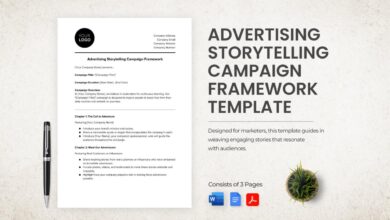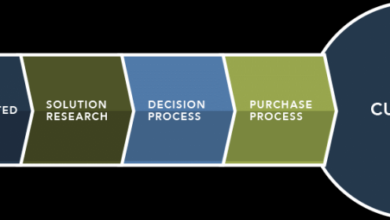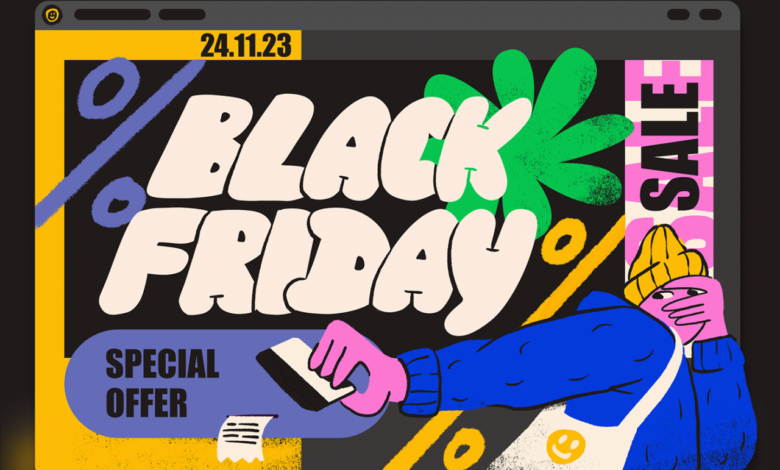
Black Friday Advertising A Deep Dive
Black Friday advertising sets the stage for a retail frenzy, influencing consumer behavior and shaping the overall customer experience. This deep dive explores the strategies, tactics, and trends behind successful Black Friday campaigns, from the creative copy to the technological tools employed. We’ll examine everything from the different approaches used by various retailers – large chains, small businesses, and online stores – to the legal and ethical considerations involved in this crucial sales period.
From crafting compelling visuals and messaging to optimizing customer experiences, this comprehensive look at Black Friday advertising will provide valuable insights into the industry’s strategies for maximizing sales and brand loyalty during this crucial shopping period. We’ll also look at how technology is transforming Black Friday campaigns, and the future of this key sales period.
Advertising Strategies
Black Friday is a retail juggernaut, and effective advertising is key to success. Businesses large and small rely on strategic campaigns to capture consumer attention and drive sales during this crucial shopping period. Understanding the diverse approaches used by various retailers offers valuable insights into maximizing returns.Retailers employ a range of strategies, adapting their approaches based on factors like size, resources, and target audience.
This analysis explores the different methods used and their effectiveness across various channels.
Comparative Overview of Black Friday Advertising Strategies
Different retail businesses adopt diverse strategies. Large chains often utilize broad, multi-channel campaigns, leveraging national television spots, extensive social media promotions, and targeted email marketing. Small businesses, on the other hand, frequently rely on localized strategies, focusing on social media engagement and local partnerships for community outreach. Online retailers leverage their platform’s strengths by offering exclusive online deals, employing targeted search engine marketing, and creating interactive experiences.
Advertising Approaches Across Various Channels
The effectiveness of a campaign depends on the channel chosen. Social media platforms allow for highly targeted advertising, engaging with specific demographics through visually appealing content. Email marketing remains a powerful tool for direct communication, providing personalized offers to subscribers. Search engine marketing (SEM) allows for placement in search results, driving traffic to websites and deals. Television and print ads offer broad reach, often employing catchy jingles or eye-catching imagery to create lasting impressions.
Examples of Successful Black Friday Ad Campaigns
Several campaigns stand out for their creative elements and successful execution. One example involves a clothing retailer who partnered with influencers to showcase their Black Friday deals. Another example is a home goods retailer using humor in their social media ads to create a memorable experience for consumers. A third example involves an electronics retailer using interactive elements on their website to showcase the technical aspects of their products and provide customers with detailed information on the features of their products.
Effectiveness of Different Advertising Mediums for Black Friday Promotions
| Medium | Reach | Cost | Engagement Metrics | Conversion Rates |
|---|---|---|---|---|
| Television | High (national reach) | High (production and airtime) | Measurable through viewership and social media chatter | Moderate to high, depending on ad quality and offers |
| Social Media | High (targeted reach) | Variable (depending on platform and targeting) | High engagement (likes, shares, comments) | Moderate to high, with strong engagement |
| Email Marketing | High (subscriber base) | Low (compared to other mediums) | Measurable through open and click-through rates | High, with personalized offers |
| Search Engine Marketing (SEM) | High (targeted traffic) | Pay-per-click model | Trackable through click-through rates and conversion | High, driving targeted traffic |
| Print Advertising | Limited (regional reach) | Moderate (printing and distribution) | Limited tracking compared to digital | Moderate, depends on targeting |
Promotional Tactics
Black Friday is a whirlwind of deals and discounts, a consumer frenzy fueled by irresistible promotional tactics. Retailers deploy a complex array of strategies to entice shoppers, from enticing discounts to strategic bundling. Understanding these tactics, their effectiveness, and the factors driving consumer response is crucial for success in this competitive landscape.The effectiveness of Black Friday promotions hinges not just on the sheer magnitude of the discounts, but also on the targeted approach to different consumer segments.
A promotion that resonates with tech enthusiasts might fall flat with budget-conscious families. This tailored approach is essential to maximizing the return on investment for each promotion.
Common Promotional Tactics
Promotional tactics are varied and often interconnected. Discounts, bundles, and limited-time offers are common strategies, each with its own impact on sales and consumer behavior. Retailers often leverage these tactics in combination to create compelling and engaging offers.
Black Friday advertising is all about maximizing those sales, right? You need a solid strategy, and that often means a great email marketing platform. For instance, a crucial part of a successful Black Friday campaign is using a tool like Klaviyo, which can help you segment your audience and personalize your messages. Want to know more about the effectiveness of Klaviyo?
Check out this in-depth Klaviyo review to see how it can elevate your Black Friday sales. Ultimately, you need to choose the right tools to really make the most of Black Friday promotions.
- Discounts: Price reductions are a cornerstone of Black Friday promotions. Percentage-based discounts, fixed dollar amounts, and “buy one get one” deals are common examples. The effectiveness of discounts varies depending on the perceived value of the product or service, and the overall market sentiment. For instance, a 50% discount on a high-demand electronics item might be more impactful than a 20% discount on a less desirable product.
- Bundles: Bundling multiple products or services at a reduced price can significantly boost sales. This approach capitalizes on the perceived value of a combination of items. A common example includes a computer bundle offering a monitor, keyboard, mouse, and printer at a lower price than purchasing each separately. The effectiveness of bundles depends on the perceived value and compatibility of the included items.
- Limited-Time Offers: The element of scarcity plays a vital role in driving consumer urgency. Limited-time offers, such as “while supplies last” or “limited-time deals,” encourage immediate action. Retailers frequently use this tactic to generate excitement and encourage impulse purchases.
Effectiveness Across Consumer Segments, Black friday advertising
The impact of a promotional tactic is often contingent on the specific consumer segment targeted. A discount that appeals to budget-conscious consumers might not resonate with luxury shoppers seeking exclusivity. Understanding these nuances is crucial for tailoring promotions to maximize effectiveness.
- Budget-conscious consumers: These consumers are highly responsive to significant price reductions and value-based promotions. Significant discounts and bundle deals are highly attractive. Examples include discounts on everyday necessities or staple items.
- Luxury shoppers: These consumers are more responsive to exclusive offers, limited editions, and unique product experiences. Limited-edition items or special events tied to the product are often effective.
- Tech enthusiasts: These consumers are often driven by the latest technological advancements and innovations. Promotions highlighting new features, cutting-edge technology, or exclusive access are highly appealing.
Key Factors Influencing Consumer Response
Several factors influence consumer response to Black Friday promotions. Perceived value, urgency, and trust in the retailer are significant determinants.
- Perceived Value: Consumers assess the value proposition of a promotion based on the perceived worth of the product or service relative to the price. A 50% discount on a defective item may not be perceived as valuable, even if the price is low.
- Urgency: Limited-time offers and limited stock often create a sense of urgency, prompting consumers to act quickly. This creates a sense of scarcity and drives immediate purchases.
- Trust in the Retailer: A consumer’s prior experience with a retailer significantly influences their response to promotions. Consumers are more likely to trust a retailer with a proven track record and positive reviews.
Impact on Sales
Different promotional tactics can generate varying impacts on sales. The following table illustrates the typical effects of common Black Friday promotions.
| Promotion Type | Target Audience | Expected Impact on Sales | Examples |
|---|---|---|---|
| Significant Discounts | Budget-conscious consumers | Increased sales volume | 50% off selected items, buy-one-get-one deals |
| Bundled Products | Value-seeking consumers, families | Increased average order value | Computer bundles, kitchen appliance packages |
| Limited-Time Offers | All segments | Increased urgency and impulse purchases | “While supplies last,” “Limited-time deals” |
Content & Messaging
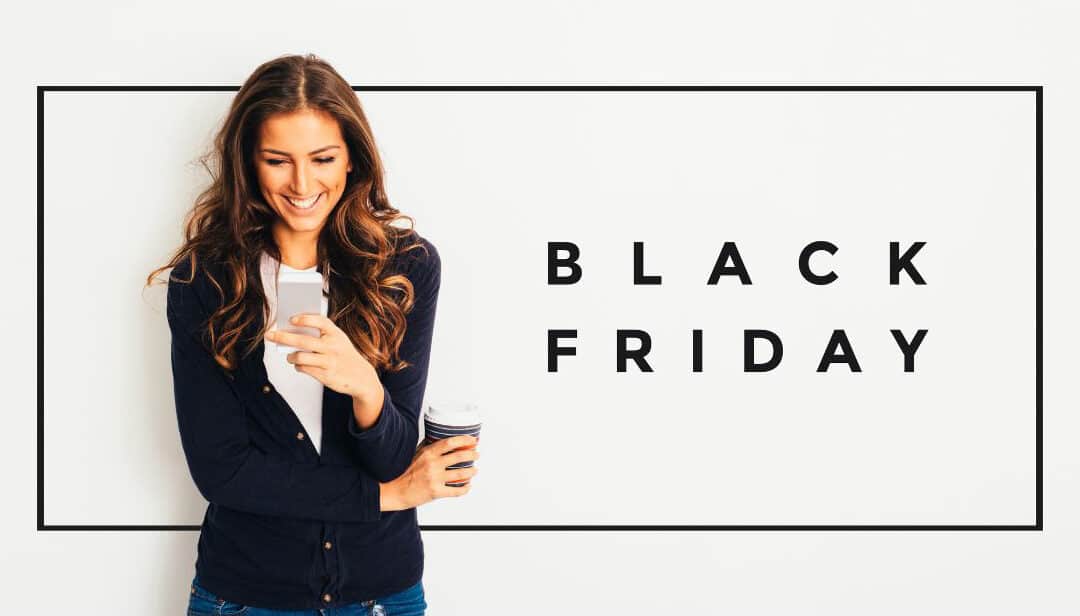
Black Friday is a crucial period for retailers, demanding compelling content and messaging to capture consumer attention and drive sales. Effective communication is paramount to maximizing conversions during this intense shopping period. This involves crafting concise, engaging copy, utilizing storytelling techniques, and employing captivating visuals. Understanding consumer psychology and leveraging persuasive language techniques can significantly impact the success of Black Friday campaigns.The key to a successful Black Friday campaign lies in understanding your target audience and tailoring your messaging accordingly.
A clear and concise message is essential to cut through the noise of competing promotions. By focusing on the value proposition of your products and emphasizing the exclusivity of the deals, you can encourage customers to act quickly and capitalize on the savings. This requires a well-defined content strategy that integrates storytelling and visual elements.
Effective Black Friday Copywriting Styles
Black Friday copywriting needs to be more than just a list of discounts. It should evoke emotion and urgency. Short, punchy sentences, combined with strong verbs and compelling calls to action, are highly effective. Examples include:
- “Limited-time offer! Get 50% off on select items.” This uses a sense of urgency and emphasizes the value proposition. It’s brief and direct, making it easy for the customer to understand.
- “Don’t miss out! Black Friday deals are here!” This creates a sense of urgency and exclusivity. The word “don’t” is a powerful call to action, urging the customer to act.
- “Upgrade your home theater system with our incredible Black Friday deal!” This focuses on the benefits of purchasing the product and links it directly to a specific need. It also highlights the product’s quality, which can be an important factor for customers during Black Friday.
Importance of Storytelling in Black Friday Ads
Storytelling is a powerful tool to connect with customers on an emotional level. Sharing the story behind the product, highlighting its craftsmanship or the journey of its creation, can resonate deeply with consumers. A compelling narrative can create a stronger connection between the brand and the customer, fostering loyalty and driving conversions.For example, a clothing retailer could tell the story of a new line of sustainable fabrics, emphasizing the ethical sourcing and environmental benefits.
This narrative can appeal to environmentally conscious consumers and build brand trust.
Role of Visuals and Imagery in Capturing Consumer Attention
Visuals are crucial in Black Friday advertising. High-quality images and videos of products, along with visually appealing designs and layouts, attract attention and increase engagement. Images should be crisp, clear, and visually appealing, showcasing the product’s features and benefits. Using color palettes and typography that align with the brand identity is essential to maintain consistency and recognition.High-resolution images that highlight the key features of the product are crucial.
Black Friday advertising is always a whirlwind of deals and promotions. It’s fascinating to see how companies strategize to capture the consumer’s attention during this shopping frenzy. For example, a deep dive into the work of Marc Fleishhacker, CMO of Bow Wow Labs marc fleishhacker cmo bow wow labs , reveals a keen understanding of the key elements driving effective Black Friday campaigns.
Ultimately, the key to successful Black Friday advertising seems to hinge on understanding the target audience and crafting compelling messaging that resonates with them.
For example, a close-up of a piece of jewelry showing its intricate details or a dynamic video showcasing a new gadget in action would be effective.
Persuasive Language Techniques Used in Black Friday Ads
Black Friday advertising often uses persuasive language techniques to influence consumer decisions. These techniques create a sense of urgency, scarcity, and value, leading to increased conversions. Here’s a breakdown of some common techniques and their effectiveness:
- Scarcity: Creating a sense of limited availability, often communicated through phrases like “while supplies last” or “limited-time offer,” incentivizes customers to act quickly. Examples: “Only 10 left in stock!” or “Offer valid for 24 hours only!”
- Urgency: Encouraging immediate action through phrases like “limited-time offer” or “act now,” creating a sense of urgency and motivating quick purchases. Examples: “Deal ends tonight!” or “Shop now before it’s gone!”
- Social Proof: Highlighting customer reviews or testimonials to build trust and credibility, as customers are more likely to trust the opinions of others. Examples: “9 out of 10 customers recommend this product” or “Customer reviews say this is the best deal in town.”
These techniques are effective because they tap into fundamental human motivations, such as the desire for a good deal and the fear of missing out (FOMO).
Customer Experience
Black Friday, a whirlwind of deals and discounts, often overshadows the crucial aspect of the customer experience. A well-executed Black Friday campaign isn’t just about snagging a bargain; it’s about creating a positive and memorable interaction that fosters brand loyalty and drives repeat business. This focus on customer experience goes beyond the immediate purchase and extends to the entire journey, from initial awareness to post-purchase follow-up.A seamless and enjoyable customer experience during Black Friday is paramount.
It’s about anticipating potential pain points, providing clear and concise information, and ensuring a smooth and efficient process for every customer interaction. This creates a positive association with the brand, making customers more likely to return for future purchases and recommend the brand to others.
Influence of Black Friday Advertising on Customer Experience
Black Friday advertising can significantly shape the customer experience. Effective campaigns build anticipation, highlighting the value proposition and creating a sense of urgency. This pre-event buzz can elevate the perceived value of the products or services being offered. Conversely, poorly executed campaigns can leave customers feeling frustrated or confused, damaging the overall experience. Brands need to carefully craft their messaging and ensure the entire customer journey aligns with their advertised value proposition.
Key Elements for a Positive Customer Experience
Several factors contribute to a positive Black Friday experience. Clear communication, both pre- and post-purchase, is essential. This includes providing detailed product information, clear and concise shipping and return policies, and readily accessible customer support channels. Efficient navigation on the website or platform is critical during high-traffic periods. Slow loading times, glitches, or difficulty finding desired products can lead to significant frustration and a negative experience.
Furthermore, offering various payment options and secure checkout procedures minimizes friction and enhances trust.
Examples of Brands Improving Customer Experience
Numerous brands are innovating to enhance the Black Friday customer experience. Some brands are preemptively addressing potential issues by offering early access to sales or exclusive discounts to loyal customers. Others utilize personalized recommendations based on past purchase history, increasing the likelihood of a purchase and satisfaction. A significant trend is focusing on personalized experiences through targeted advertisements, which often feature tailored product recommendations and promotions.
For instance, a clothing retailer might highlight items frequently purchased by a customer or suggest accessories that complement previously bought clothing.
Impact of Personalized Advertising
Personalized advertising plays a critical role in improving Black Friday sales and customer satisfaction. By understanding individual customer preferences, brands can tailor their messaging to resonate more effectively. This targeted approach can increase conversion rates by presenting relevant offers and products. It can also enhance customer satisfaction by demonstrating that the brand values individual needs. Personalized promotions can create a more meaningful and engaging experience, potentially leading to increased customer lifetime value.
Technological Trends: Black Friday Advertising
Black Friday, a whirlwind of deals and discounts, is increasingly reliant on technology. From personalized recommendations to automated order fulfillment, the digital landscape is transforming how retailers interact with consumers during this crucial shopping period. This evolution is driven by a constant push to optimize campaigns, enhance customer experience, and maximize sales conversion rates.The integration of technology is not just about convenience; it’s about harnessing data-driven insights to anticipate customer needs and tailor offers in real-time.
This allows for dynamic pricing adjustments, personalized promotions, and efficient inventory management, all culminating in a more seamless and engaging Black Friday experience for both retailers and shoppers.
AI-Powered Personalization
AI algorithms are crucial in crafting personalized shopping experiences for Black Friday. These algorithms analyze vast amounts of customer data, including browsing history, purchase patterns, and demographics, to predict individual preferences and tailor recommendations. This ensures shoppers receive offers highly relevant to their interests, driving higher engagement and conversion rates. Examples include dynamically updating product displays with items a user is likely to be interested in, or suggesting complementary products during the checkout process.
Retailers are increasingly utilizing AI to segment customers and deliver highly targeted promotions, increasing the effectiveness of their marketing efforts.
Big Data for Predictive Analytics
Big data plays a critical role in anticipating market trends and consumer behavior. By analyzing massive datasets encompassing past Black Friday sales data, social media trends, and market indicators, businesses can gain valuable insights into anticipated demand and price fluctuations. This allows for optimized inventory management, accurate pricing strategies, and targeted promotions, thereby minimizing risks and maximizing profits.
For instance, analyzing previous purchase data can reveal popular product combinations, enabling retailers to proactively stock those items and tailor their marketing efforts to highlight those bundles.
Automation for Enhanced Efficiency
Automation is revolutionizing Black Friday operations, streamlining tasks and improving efficiency across the board. From automated order processing and fulfillment to chatbots handling customer inquiries, automation reduces manual labor, minimizes errors, and enables faster response times. This allows retailers to handle a higher volume of orders and provide superior customer service during the peak shopping period. For example, automated inventory tracking systems ensure timely restocking of popular items, preventing stockouts and maintaining customer satisfaction.
Future Trends in Black Friday Advertising Technologies
The future of Black Friday advertising will be shaped by advancements in augmented reality (AR) and virtual reality (VR). AR applications could allow customers to virtually try on clothing or visualize furniture in their homes, creating a more immersive and interactive shopping experience. VR could offer virtual tours of stores, allowing customers to explore products and services in a virtual environment.
Furthermore, the increasing prevalence of voice commerce will likely influence advertising strategies, with retailers creating voice-activated advertisements and interactive experiences to engage customers.
Advantages and Disadvantages of Utilizing Various Technologies
| Technology | Advantages | Disadvantages ||—|—|—|| AI-powered Personalization | Enhanced customer experience, increased conversion rates, improved targeting | Potential for bias in algorithms, data privacy concerns, high initial investment cost || Big Data Analytics | Predictive insights, optimized inventory management, better pricing strategies | Data security and privacy issues, complex data analysis, potential for misinterpretation of data || Automation | Increased efficiency, reduced errors, faster response times | Job displacement concerns, potential system failures, dependence on technology || AR/VR | Enhanced customer experience, interactive shopping, immersive interactions | High development costs, limited adoption rate, need for specialized devices |
Legal & Ethical Considerations
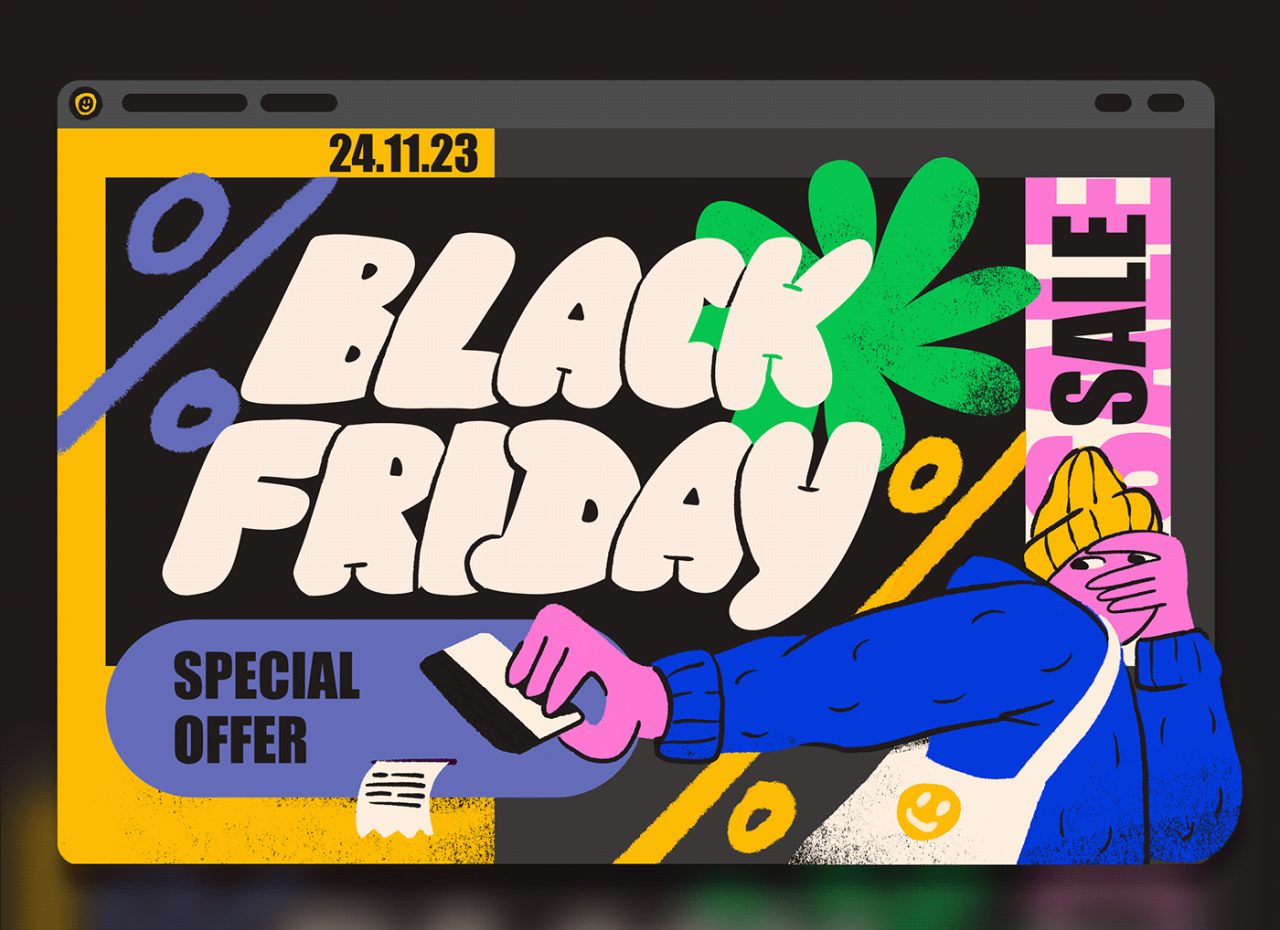
Black Friday, with its allure of deep discounts and limited-time offers, presents a unique set of legal and ethical challenges for businesses. Maintaining transparency, avoiding deception, and adhering to regulations are crucial for fostering consumer trust and avoiding legal repercussions. A strong ethical framework is essential for a successful and sustainable Black Friday campaign.Ethical advertising practices during Black Friday are not just a matter of good business; they are fundamental to building a reputation and maintaining customer loyalty.
Consumers are increasingly discerning and expect brands to act responsibly, promoting trust and fostering positive relationships. A strong ethical compass is essential to navigating the complexities of this lucrative sales period.
Misleading or Deceptive Advertising Practices
Businesses should scrupulously avoid practices that mislead consumers. These practices can range from exaggerating savings to creating false scarcity or implying a product’s availability that is not real. Such practices erode trust and can lead to legal issues.
- Exaggerated Savings Claims: Promoting a product as “75% off” when the original price was artificially inflated to create the illusion of a substantial discount is a deceptive tactic. A product’s true value must be accurately reflected.
- False Scarcity: Creating an impression of limited availability when inventory is ample or simply manipulating inventory to appear limited is unethical and can damage brand credibility.
- Bait and Switch: Advertising a desirable product at a low price to attract customers, only to substitute it with a less desirable product at a higher price is a deceptive tactic. Consumers must be shown the true value proposition of what they are purchasing.
- Unrealistic Expectations: Creating unrealistic expectations for the duration of deals or the extent of savings is another deceptive practice. Promoting deals that are short-lived or with limited quantities can lead to frustration and negative experiences.
Legal Regulations and Guidelines
Understanding the legal framework surrounding Black Friday advertising is vital. Different jurisdictions have various regulations. Adherence to these rules is essential to avoid legal issues.
- Truth in Advertising Laws: These laws mandate that advertising claims must be accurate and not misleading. Every claim made must be verifiable and supported by evidence. The advertised price should be the actual price.
- Consumer Protection Laws: These laws protect consumers from unfair or deceptive practices. These regulations aim to ensure that consumers are not misled and can make informed purchasing decisions.
- Federal Trade Commission (FTC) Guidelines: The FTC provides guidelines for advertising practices. Adherence to these guidelines can help businesses avoid legal issues and maintain a positive reputation.
Transparency and Accuracy in Black Friday Advertising
Transparency and accuracy are paramount to building trust and maintaining a positive brand image. Honesty and clarity are key components.
- Clear and Concise Information: Advertisements should clearly and concisely communicate the product details, pricing, and conditions. The terms and conditions should be clearly displayed.
- Accurate Pricing: The advertised price should be the actual price. All discounts, taxes, and shipping costs should be transparently disclosed.
- Genuine Reviews: Avoid using fake or manipulated reviews to promote products. Authentic reviews are essential for building trust and credibility.
Visual Elements
Black Friday is a visual spectacle. Compelling visuals are crucial for grabbing attention and driving sales during this intense shopping period. Effective visual strategies can transform a simple product listing into an irresistible offer, turning potential customers into enthusiastic buyers. This section dives into the crucial role of visual elements in Black Friday advertising.Visuals are more than just pretty pictures; they’re powerful tools that can influence emotions and perceptions.
A well-crafted Black Friday ad can convey a sense of urgency, excitement, and value, all through the use of color, typography, and imagery. This section explores how to leverage these elements to create memorable and impactful ads.
Compelling Visual Elements in Black Friday Ads
Black Friday advertisements often feature high-quality images and videos of products. The goal is to showcase the products in a way that highlights their features and benefits. Visuals should be crisp, clear, and well-lit. A visually appealing ad is more likely to be remembered and shared, leading to increased brand visibility and customer engagement. Examples include large product displays, dynamic promotional offers, and lifestyle shots demonstrating how products can enhance customers’ lives.
Role of Color Palettes in Black Friday Advertising
Color palettes play a significant role in setting the tone and mood of a Black Friday ad. A vibrant and energetic color scheme can evoke feelings of excitement and urgency. Conversely, a more subdued palette can create a sense of elegance and sophistication. Color choices should be carefully considered, aligning with the brand’s identity and the specific message being conveyed.
For example, using red and yellow in a Black Friday ad can create a sense of urgency and excitement, while using blues and greens might suggest a sense of trust and value.
Role of Typography in Black Friday Advertising
Typography is crucial in creating a cohesive visual identity. The fonts, sizes, and styles chosen for the ad should complement the overall message and brand aesthetic. A bold and striking font can emphasize important offers, while a more subtle font can create a sense of elegance. The font choices should be legible and easily readable, even at a glance.
Black Friday advertising is a whirlwind of deals and discounts, but how can brands maximize their impact? Suzanne Kounkel, Chief Marketing Officer at Deloitte, a recognized ignite marketer of the week, highlighted some key strategies for crafting compelling campaigns. Ultimately, effective Black Friday advertising hinges on understanding consumer behavior and delivering genuine value.
For example, a bold, sans-serif font can be used to highlight a discount percentage, while a more elegant serif font can be used for the brand name or tagline.
Creating Visually Appealing Black Friday Advertisements
Visually appealing Black Friday advertisements need to capture attention quickly and clearly communicate the offer. High-quality images and videos are crucial. Ensure products are showcased in an attractive and engaging manner. Visual elements should be strategically placed to guide the viewer’s eye and highlight key information. This involves using contrast, negative space, and visual hierarchy.
Visual Consistency Across Platforms
Maintaining visual consistency across different platforms is essential for brand recognition. A consistent visual identity across social media, email marketing, and website banners helps customers recognize and trust the brand. Using the same color palette, fonts, and imagery across all platforms reinforces brand identity and creates a unified experience for the customer. This consistent visual language across various channels reinforces brand recognition and builds customer trust.
Measuring Effectiveness
Black Friday advertising campaigns require meticulous tracking and analysis to determine their success. Understanding the return on investment (ROI) and the effectiveness of various strategies is crucial for optimizing future campaigns. A robust measurement strategy allows marketers to identify what worked, what didn’t, and why, leading to informed decisions for future campaigns.Measuring effectiveness is not just about counting clicks; it’s about understanding the entire customer journey and how the campaign influenced purchasing decisions.
This involves looking at metrics beyond immediate sales to assess the campaign’s impact on brand perception, customer engagement, and long-term customer loyalty.
Key Metrics for Black Friday Campaign Performance
Various metrics can provide insights into the effectiveness of Black Friday advertising. Understanding these metrics helps marketers assess campaign performance and optimize future strategies.
- Conversion Rate: This measures the percentage of website visitors who complete a desired action, such as making a purchase. A higher conversion rate signifies greater effectiveness in driving sales from website traffic.
- Click-Through Rate (CTR): This measures the percentage of people who see an ad and click on it. A higher CTR indicates that the ad is appealing and relevant to the target audience.
- Cost per Acquisition (CPA): This metric calculates the average cost of acquiring a new customer. Lower CPA values suggest more efficient advertising campaigns. CPA is particularly valuable for assessing the financial impact of the campaign.
- Return on Ad Spend (ROAS): This metric compares the revenue generated from advertising to the cost of the ad campaign. A higher ROAS signifies a more profitable campaign.
- Website Traffic: Monitoring website traffic during and after the campaign provides insight into the campaign’s effectiveness in driving customer engagement. Increased traffic indicates that the campaign is reaching the intended audience and encouraging engagement.
Data Visualization Techniques
Visualizing data from Black Friday campaigns is essential for identifying trends and patterns. Effective visualization techniques transform raw data into easily understandable insights.
- Line Charts: These charts are excellent for tracking metrics over time, allowing marketers to see trends in website traffic, sales, and conversion rates throughout the campaign period. This helps identify peaks and dips, and understand the campaign’s impact on customer engagement.
- Bar Charts: These charts are useful for comparing different ad groups, products, or channels. They help to quickly identify which campaigns or products are performing best and which require further optimization.
- Scatter Plots: Scatter plots can illustrate the relationship between two variables, such as ad spend and sales, to highlight potential correlations and dependencies. This helps in identifying which ad spends are driving the highest returns.
- Heatmaps: These visual representations can highlight areas of high and low engagement on a website, helping to identify areas needing improvement. For example, if a particular product page has low engagement, the heatmap will highlight that section, allowing for focused optimization efforts.
Metric Comparison Table
The table below compares various metrics used to evaluate Black Friday ad effectiveness.
| Metric | Formula | Interpretation | Example Data |
|---|---|---|---|
| Conversion Rate | (Conversions / Website Visits) – 100 | Percentage of visitors who complete a desired action (e.g., purchase). | (150 Purchases / 500 Visits) – 100 = 30% |
| CTR | (Clicks / Impressions) – 100 | Percentage of ad impressions that resulted in clicks. | (500 Clicks / 10,000 Impressions) – 100 = 5% |
| CPA | Total Ad Spend / Total Conversions | Average cost to acquire a new customer. | $10,000 Ad Spend / 200 Conversions = $50 CPA |
| ROAS | Revenue Generated / Ad Spend | Ratio of revenue generated to ad spend. | $20,000 Revenue / $10,000 Ad Spend = 2.0 ROAS |
Final Review
In conclusion, Black Friday advertising is a dynamic landscape shaped by a complex interplay of strategies, tactics, and technological advancements. The strategies explored demonstrate the need for retailers to adapt to changing consumer preferences and leverage emerging technologies to achieve maximum impact. Ultimately, success hinges on understanding and anticipating consumer behavior, crafting compelling messaging, and delivering exceptional customer experiences.
The key takeaway is that a well-executed Black Friday advertising campaign goes far beyond simple discounts; it’s about creating a holistic experience that resonates with customers and drives significant sales.
